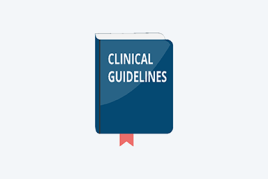Board-certified dermatologist (and mom) shares holiday shopping tips for teens and tweens.
ROSEMONT, Ill. (Oct. 28, 2025) — As online skincare trends continue to capture the attention of tweens and teens (and major retailers roll out early holiday promotions), an AAD board-certified dermatologist offers guidance to help families cut through the hype, reminding parents that simple, age-appropriate products are the most safe and effective.
Skincare needs shift as children grow, according to Marisa Garshick, MD, FAAD, a board-certified dermatologist in New York City who is also the mother of tweens. Tweens benefit from learning the basics, like cleansing, moisturizing, and sun protection, while teens face new challenges from hormonal changes that can lead to acne and oily skin.
“I try to emphasize to my own children that skincare doesn’t have to be complicated to be effective, and just because something looks fun to use or is expensive, doesn't mean it is good or better for your skin,” said Dr. Garshick. “More is not more in this case, and consistency matters more than a 10-step routine. So, it’s better to focus on fewer products that are used consistently.
Starting healthy routines early
Dr. Garshick recommends that tweens start with a simple skincare routine: washing their face with a gentle cleanser, applying a fragrance-free moisturizer, and wearing a broad-spectrum, water-resistant sunscreen with an SPF of 30 or higher daily.
Using a gentle, non-abrasive cleanser and moisturizing regularly is important because harsh cleansing or scrubbing can irritate the skin, while moisturizing helps relieve dryness and itchiness. Fragrance-free products are best, she said, because added scents can trigger irritation or allergic reactions, making these options safer and gentler for sensitive skin.
“While some may opt to wash their face twice daily, for those with dry or sensitive skin, just washing once per day in the evening may be sufficient,” she said. “Overall, these habits create a strong foundation that will keep their skin healthy as they get older.”
It’s normal for tweens to be curious about skincare, she said, but it’s important that parents educate their children that adding too many products or using harsh ingredients too early can cause irritation and potentially more skin concerns.
Hormones change skincare needs
As tweens become teenagers, hormonal changes often increase oil production, which can lead to blackheads, breakouts, and oily complexions, so skincare routines may focus on controlling oil levels and include acne-fighting ingredients, said Dr. Garshick.
“At this stage, it may be helpful to add ingredients like salicylic acid or benzoyl peroxide for acne prevention, while still ensuring that they’re keeping their skin hydrated and using sun protection daily,” she said.
Benzoyl peroxide is one of the most effective and commonly used acne treatments, and it’s found in prescription and non-prescription acne medications. Salicylic acid is commonly found in acne cleansers, toners, spot treatments, and medicated pads. However, both medications can cause dry skin and irritation, which is why it’s important to use a gentle moisturizer every day.
If your teen has sensitive skin or their skin is reacting to over-the-counter products, it’s important to see a board-certified dermatologist, who can diagnose the issue and help your child choose products that work best for their type of skin. For those who have acne, it’s important to see a dermatologist if breakouts are leaving dark marks or scars, or if the acne hasn’t improved after a few months of over-the-counter treatment.
Social media and holiday shopping
Social media may make every product seem like a must-have, but not all trends or products are right for every teen’s skin type or concerns, said Dr. Garshick. When considering products, it's always important to look for key science-backed ingredients, including ceramides, which keep your skin hydrated, and hyaluronic acid, which improves skin texture and reduces the appearance of fine lines.
“When introducing new products to the skin, it is always best to introduce one new product at a time to ensure your skin can tolerate it,” said Dr. Garshick. “For those with sensitive skin, it can also help to apply a small amount of a new product to the skin to test it prior to applying to the whole face.”
With major retailers offering an onslaught of options to kick off their holiday sales, maneuvering your tween’s or teen’s wish list can be a daunting process, especially if you’re not sure what’s safe for them to use.
“The number one thing I recommend to parents is that it’s important to choose age-appropriate products,” said Dr. Garshick. “Stick with gentle cleansers, lightweight moisturizers, and broad-spectrum sunscreen.”
Dr. Garshick recommends that tweens and teens avoid products with active ingredients like retinol, vitamin C, and exfoliating acids, which target concerns like wrinkles, sun damage, and uneven skin tone, issues that children don’t have. Since children’s skin is still developing, it’s thinner, more sensitive, and more prone to irritation than adult skin. These types of active ingredients can cause redness, burning, or peeling, and provide no benefit to such young skin.
In some cases, a dermatologist may recommend a retinoid or salicylic acid—an exfoliating ingredient commonly used to treat acne—for a teen or tween, she noted. However, it’s important to first consult with a board-certified dermatologist to determine what’s appropriate for their skin.
“If kids learn to wash their face, moisturize, and wear sunscreen every day, they’re already ahead of the curve,” Dr. Garshick said.
To learn more about what types of skincare products work best for your teen or tween, or to address any skin, hair, or nail concerns, find a board-certified dermatologist in your area by visiting aad.org/findaderm.
# # #
Contact
Shelby Homiston, shomiston@aad.org
Media Relations, mediarelations@aad.org
More information
Basic Skin Care Tips
Acne Management for Teens
About the AAD
Headquartered in Rosemont, Ill., the American Academy of Dermatology, founded in 1938, is the largest, most influential and most representative of all dermatologic associations. With a membership of more than 21,000 physicians worldwide, the AAD is committed to advancing the diagnosis and medical, surgical, and cosmetic treatment of the skin, hair, and nails; advocating high standards in clinical practice, education and research in dermatology; and supporting and enhancing patient care because skin, hair, and nail conditions can have a serious impact on your health and well-being. For more information, contact the AAD at (888) 462-DERM (3376) or aad.org. Follow @AADskin on Facebook, TikTok, Pinterest, and YouTube, and @AADskin1 on Instagram.
Editor’s note: The AAD does not promote or endorse any products or services. This content is intended as editorial content and should not be embedded with any paid, sponsored or advertorial content as it could be perceived as an AAD endorsement.
 Find a Dermatologist
Find a Dermatologist
 Member directory
Member directory
 AAD Learning Center
AAD Learning Center
 2026 AAD Annual Meeting
2026 AAD Annual Meeting
 Need coding help?
Need coding help?
 Reduce burdens
Reduce burdens
 Clinical guidelines
Clinical guidelines
 Why use AAD measures?
Why use AAD measures?
 Latest news
Latest news
 New insights
New insights
 Physician wellness
Physician wellness
 Joining or selling a practice?
Joining or selling a practice?
 Promote the specialty
Promote the specialty
 Advocacy priorities
Advocacy priorities
